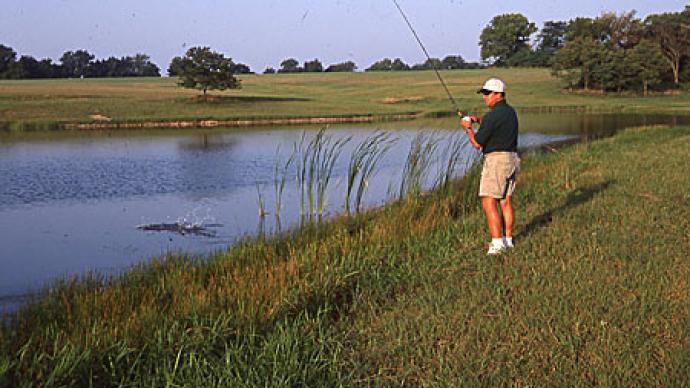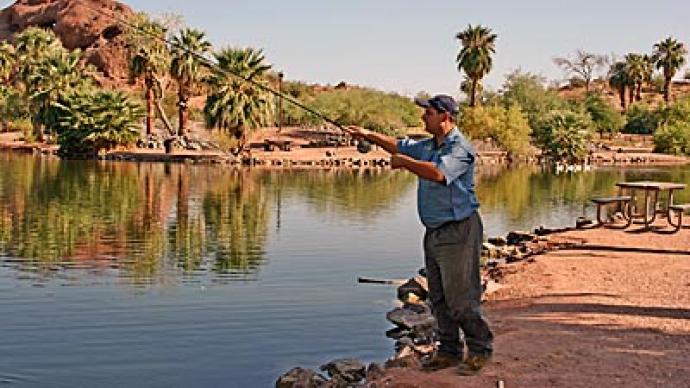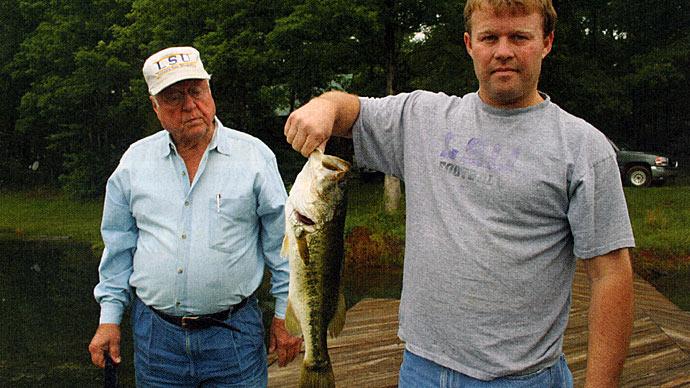
You don’t need a 20-foot bass boat to catch bass, but you do need to employ some special strategies if you’re going to fish from shore. Nearly every angler – myself included – learned to fish by walking the bank. And, like most fishermen, if I knew then what I know now, I could have been a whole lot more successful.
So, if you’re boatless, here are some tips to make you a better angler than Hank Parker was before he bought his first boat:
Find the good waters
Those secret hotspots and farm ponds aren’t going to be along the major highways or well-worn trails. Ask your county government officials where you can find rural area maps that might show ponds that aren’t visible from the road. If you’ve got a friend who owns a plane, ask him to fly you over nearby rural areas and make notes on waters that are less noticeable from the ground.
Remember: the harder it is to find or get permission to fish a small lake or pond, the more likely the fishing is good. By the same token, don’t trespass or be disrespectful of another person’s land.
Fish where the bass are
What’s the first thing most people do when they cast into a pond or lake? Throw toward the middle. That can pay off if your cast happens to land on a point or shallow ledge, but those structures are rare in ponds.
Better yet, target the cover and structure near shore. Get into position to cast parallel to the bank, even if it means getting your feet wet. Bass are shallow-water creatures and will lounge just off the bank of a pond, especially if there is some cover there. If the bottom is firm, wear a pair of hip boots that allow you to make better lure presentations to bushes or logs. If the pond is deep, invest in a belly boat and a pair of foot fins so you can work those shoreline areas more effectively.
Be sneaky
Bass in small, remote waters may not be as “lure smart” as heavily fished lake bass, but they can be just as wary. Move quickly along the shore, since any abrupt ground movement can send vibrations into nearby water. When I finish fishing a spot, I walk directly away from the pond for 50 yards, then quietly approach another unfished area.
I also keep my face to the sun so I don’t cast a shadow onto the water. Shadows send danger signals to bass that may have struck your lures had they not been alarmed.
Downsize your lures
Bass in ponds and small lakes prefer smaller lures that make less noise and displace little water. Small-water bass are more aware of their aquatic environment, and small waters tend to be more stable or consistent than big lakes and reservoirs. That’s why a radical lure, such as a big-bladed spinnerbait or a rattling crankbait, can put them on the defensive. You may catch a few on those lures, but I think you’ll be more successful with a subtle presentation.
For example, I’ve caught more pond bass on wooden lures or a split shot plastic worm that falls slowly than any other type of artificial lure. Spinnerbaits work too, but the smaller-bladed versions tend to be more productive.
Each year, shore anglers catch some of America’s biggest bass from ponds and small lakes. Employ some of these sneaky tricks and you could be the envy of all your buddies who fish from boats.
You can find more articles, quick tips and much more at HankParker.com.




